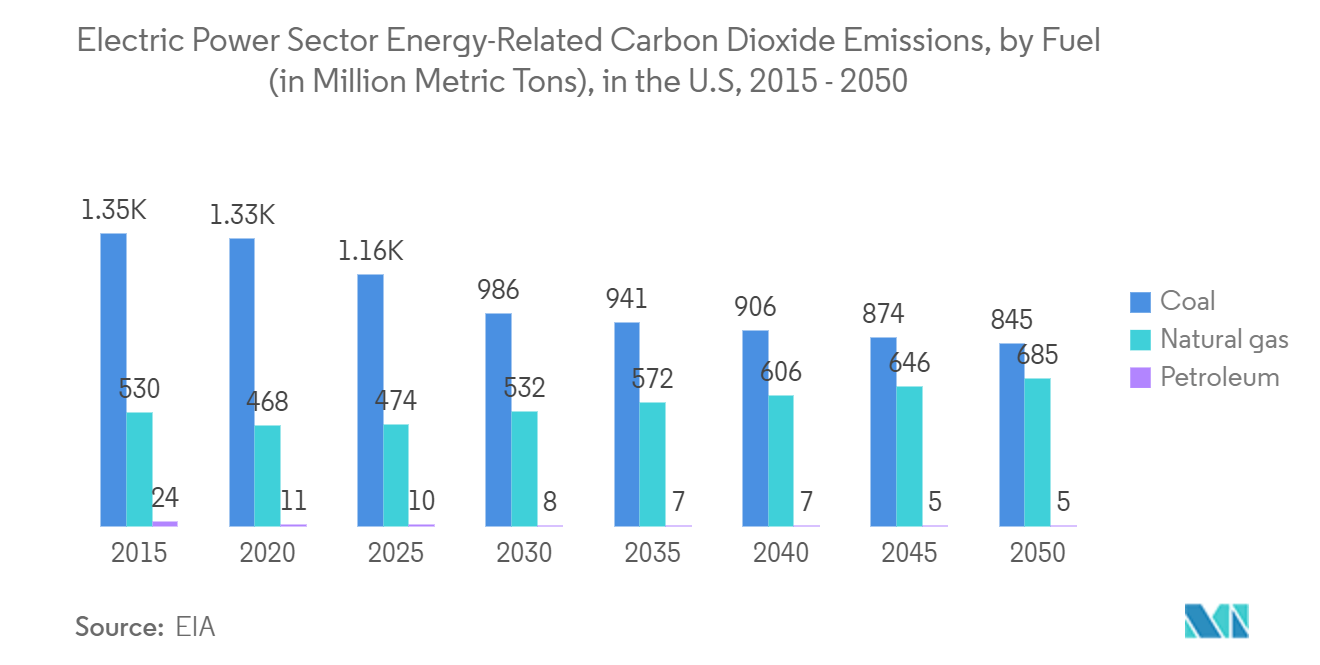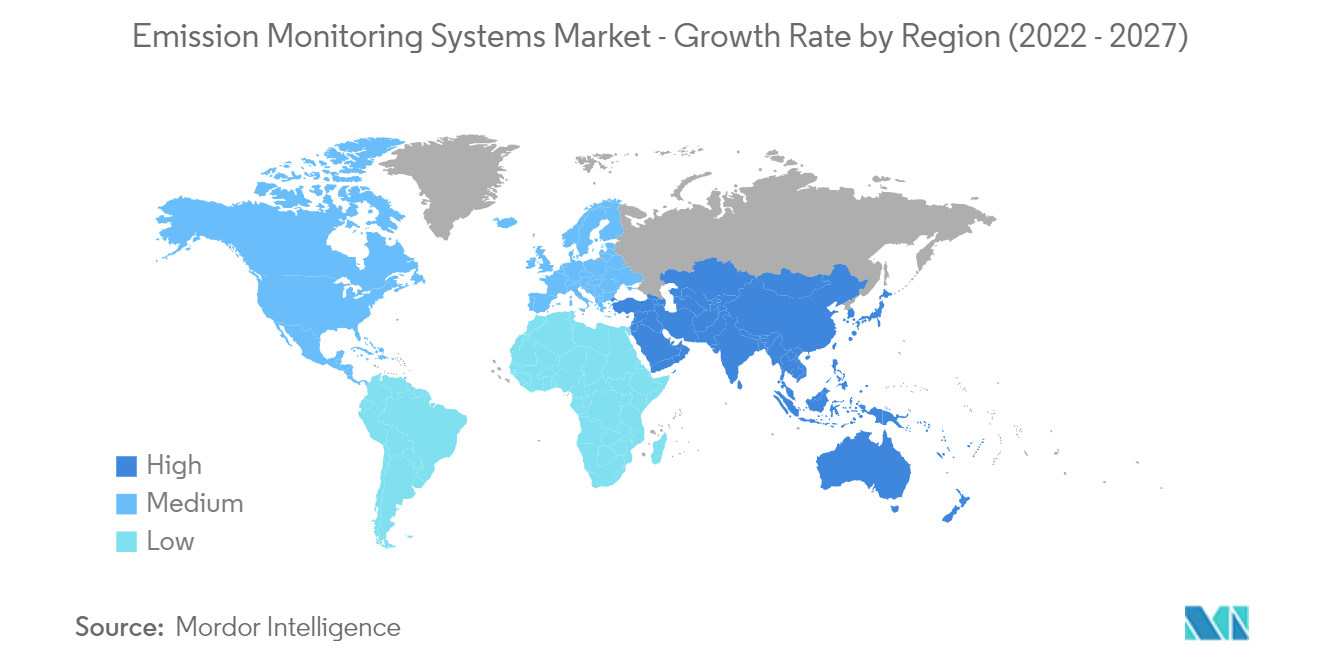Market Trends of Emission Monitoring Systems Industry
This section covers the major market trends shaping the Emission Monitoring Systems Market according to our research experts:
Oil & Gas Segment is Expected to Witness Significant Growth
- The EPA's (Environmental Protection Agency) air pollution and clean air act have set a limit on the in-stack emission of pollutant concentrations at the point of release for various industries such as power plants, oil & gas, and building materials are thereby required to maintain their emission monitoring standards continue to have an operating license. Under the EPA regulations, implementing a CEMS is necessary for continuous compliance determination or exceeding set standards.
- The rapid growth of the crude oil and natural gas infrastructure across the globe and several power generation facilities is also expected to play a crucial role in driving the demand for these systems over the forecast period.
- For instance, according to EIA, the U.S. electric power sector's carbon dioxide emissions from selected fuels from 2015 with projections to 2050 by fuel. It is estimated that 685 million metric tons of carbon dioxide will be produced using natural gas in the U.S. electric power sector in 2050.
- Emission monitoring systems are primarily deployed in the oil and gas industry to measure and minimize the emission of hazardous chemicals such as methane, carbon dioxide, and sulfur dioxide, among others, and to gather the required data for reporting emissions released to government regulatory agencies such as the industrial emissions directive (IED) by the European Parliament and the Council on industrial emissions and clean air act by the EPA in the United States.
- The members of the Oil and Gas Climate Initiative (OGCI) aimed to reduce methane emissions by 0.25% by 2025. This would be one-fifth of the levels in 2017. This is expected to reduce methane emissions by 350,000 tonnes per year (approximately 8.8 million tonnes of CO2 equivalent). As BP and EOG (among others) have stated in their strategies, digital technologies are poised to be critical in tracking emissions by site and recording progress. The OGCI has invested in emissions monitoring via sensors, satellites, and reporting in five of its twelve investments. Such trends and initiatives are expected to boost market growth even further.

North America to Hold Significant Market Share
- The US Environmental Protection Agency is committed to the protection of public health by the improvement of air quality and the reduction of air pollution. The implementation of the Clean Air Act in the United States and the technological advancements, since then, from multiple innovators have dramatically improved the air quality in the country, as cleaner air provides significant public health benefits.
- The EPA primarily works with the state, local, and tribal governments to reduce more than 180 hazardous air pollutants emissions. Moreover, the fine particles in smoke can cause many health problems, such as burning eyes, runny nose, and illnesses like bronchitis. These microscopic particles can also cause chronic heart and lung diseases, one of the major factors driving the demand for emissions monitoring systems.
- Many provinces and states are taking the lead in transitioning to clean energy by introducing policies that promote energy efficiency and carbon management. For instance, British Columbia's CleanBC Plan has set provincial targets for significantly reducing emissions by 40% from FY 2005 levels by FY 2030, then 60% by FY 2040, and 80% by FY 2050.
- Government initiatives to reduce energy emissions from various old and public buildings are also increasing market demand. For example, the US General Services Administration signed a contract with IBM Corporation to install efficient and smart building technologies in 50 of the state and federal governments' most energy-consuming buildings.
- Furthermore, in the United States, any power plant larger than 25 megawatts, including generators at universities, is equipped with a continuous emissions monitoring system, as data quality is critical. Vendors are developing better data-driven tools to improve the quality of CEMS (Continuous Emission Monitoring System) data.


